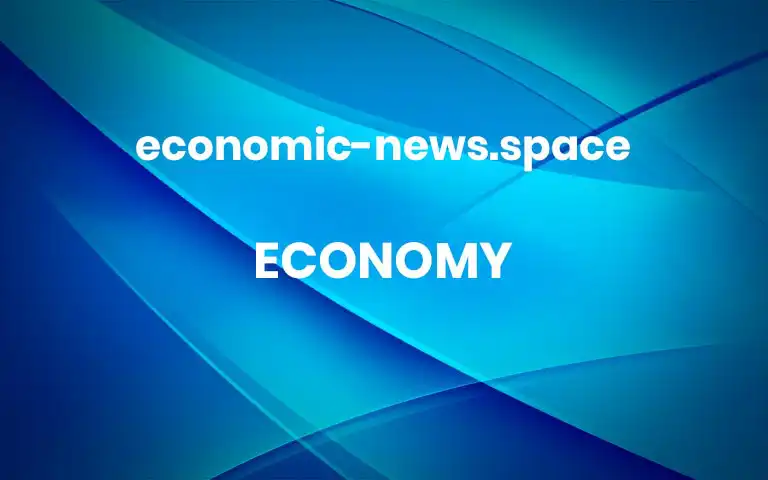The Fed’s Favorite Price Index Rose 4 Percent. What Comes Next?

The Federal Reserve’s inflation gauge popped in June from a year earlier. Economists think it will begin to moderate.The Federal Reserve’s preferred measure of inflation climbed by 4 percent in June compared with a year earlier, as a rebounding economy and strong demand for goods and services helped to push prices higher.The gains in the Personal Consumption Expenditures inflation index were the fastest since 2008, but in line with economists’ expectations. That rapid pace is not expected to last — and how much and how quickly it will fade is the economic question of the moment.Inflation has been surprisingly quick this year. Economists knew prices would post strong increases as they were measured against weak figures from 2020, when costs for many common purchases slumped. But the jump in recent months has been more intense than most were expecting.Prices for goods and services risePercent change in personal consumption expenditures index from prior year
Source: Bureau of Economic AnalysisBy The New York TimesThat’s partly because supply bottlenecks have emerged across America’s reopening economy. Computer chip shortages pushed up the prices of electronics and delayed automobile production, causing used car prices to surge as people scrambled to find vehicles. Employers are struggling to hire back workers fast enough to meet returning demand, and wages and prices at restaurants and some other service providers have begun to move higher.Spending remains strong, Friday’s release also showed, climbing 1 percent in June compared with May. That was more than the 0.7 percent pop that economists in a Bloomberg survey had anticipated, and adjusted for inflation, it was still up 0.5 percent.Even as consumer demand holds up, June’s inflation data may be a high point in the price pressure saga. Last year’s low figures are becoming a less important factor, and many economists expect the rapid pace of price gains to begin to moderate in the coming months. A breakneck increase in used vehicle prices, which has been large enough to push overall prices higher, showed signs of moderating in July.Yet how quickly inflation will fall back to the Fed’s 2 percent target, which it tries to hit on average over time, is increasingly uncertain. It is hard to know how quickly the supply chain snarls that have complicated the price picture so far this year will clear up, or whether new ones will emerge. Climbing coronavirus cases around the world and the emergence of new variants, like Delta, could make for continued disturbances in global production and shipping routes, ones that will hit just in time for the back-to-school and the holiday shopping seasons.“The problem with the Delta variant is that the factors that are reducing the supply of goods and labor are elongated and continue,” said Constance L. Hunter, chief economist for the accounting firm KPMG. “This prolongs many of the components of the pandemic that were causing inflation.”Michael Patrick, a chef and restaurateur in Memphis, has had to raise pay for cooks and dishwashers to entice them to return to his upscale Southern food restaurant, Rizzo’s by Michael Patrick. His food costs have risen, too, because supply-chain issues have made it hard to get chicken and other key ingredients. So he has responded by raising menu prices twice in recent months. So far, his customers aren’t complaining.“People aren’t even blinking,” he said. “Not one person has said to me, ‘I can’t believe you raised your price on meatloaf two dollars.’”But Mr. Patrick is concerned about the effects of the Delta variant. Both he and his customers have learned to navigate pandemic life, he said, so he is confident he will be able to maintain sales. But if the resurgence of the virus leads to more shutdowns at meat-processing plants and other food producers, that could pose a bigger challenge.“Canola oil, beef, chicken — it’s all going up because the supplies just weren’t there,” he said. “Hopefully, at the end of the day, these variants don’t cause a lot of these companies to close their doors again.”It will matter for workers how quickly today’s robust price gains fade. Higher prices are taking a bite out of workers’ paychecks. Income after taxes fell 0.5 percent June, accounting for the impact of inflation. Over the past year, inflation has more than offset a modest rise in after-tax income.The data released Friday showed that core inflation, which strips out volatile food and fuel prices and can give a cleaner reading on price trends, picked up by 3.5 percent in June from a year earlier, for the highest annual reading in 30 years.The headline index climbed 0.5 percent from May to June, slightly less than the 0.6 percent that economists in a Bloomberg survey had expected.The fresh inflation data, released by the Commerce Department, came out later than a separate Labor Department inflation report. But they are closely watched because the Fed uses the Personal Consumption Expenditure index — which tracks things people consume but do not directly pay for, like medical care — to judge progress toward its inflation target.“The U.S. economy surprised us all,” James Bullard, president of the Federal Reserve Bank of St. Louis, said during a speech on Friday. “Quite a bit of inflation, much more than we have experienced historically. Of course, we do expect that to moderate, but I don’t think it’s going to moderate completely in 2022.”The Fed is willing to look through inflation it expects to be temporary, but it would be concerned if it saw rapid price gains turning into a stickier situation. Officials are especially watching trends like rising wages for a sense of whether price gains will last.Wages and salaries rose 0.9 percent in the second quarter, slightly slower than in the first three months of the year, according to separate data released Friday by the Labor Department. But pay is rising rapidly in some industries that are reopening as the pandemic ebbs: Wages in the leisure and hospitality sector rose 2.8 percent in the second quarter, and are up 6.1 percent over the past year.Service workers are getting raisesPercent change from prior quarter in private-sector wages and salaries
Note: Data is seasonally adjustedSource: Bureau of Labor StatisticsBy The New York TimesShould pay increases turn into a cycle — one in which workers regularly ask for more money to cover rising costs, and employers give raises but pass the expense on — it could make for persistent inflation down the road. Fed officials generally do not think that is happening right now.“There is a form of wage inflation that can lead to price inflation, and we’re not seeing that right now,” Jerome H. Powell, the central bank’s chair, said at a news conference on Wednesday.Mr. Powell and many of his colleagues have maintained that price pressures should fade as the economy gets back to normal — Mr. Bullard is among the more concerned Fed officials when it comes to inflation. Many central bankers point out that even though inflation has come in hot in recent months, consumer expectations for future inflation remain at historically normal levels.White House economic officials have been stressing similar points, and arguing that high inflation is no reason to dial back their policy ambitions, which they say would not add to price pressures. The Biden administration is trying to shepherd a $1 trillion bipartisan infrastructure bill through Congress, one that includes $550 billion in new spending to make far-reaching investments in the nation’s transit and public works.But Republicans have seen rising inflation as a poignant way to criticize the Biden administration, which they say is mismanaging the economic reopening and allowing prices to gallop out of control.“There’s no question we have serious inflation right now,” Senator Patrick J. Toomey, a Republican from Pennsylvania, said in a CNN interview last week. “There is a question about how long it lasts. And I’m just worried that the risk is high that this is going to be with us for a while.”Even some central bankers are becoming wary as inflation rises.“The risk on inflation is that it does not fall back as rapidly as we had hoped, or that we get some other kind of shock that sends inflation even higher in 2022,” Mr. Bullard said on Friday. He argued that the central bank ought to start slowing down its big bond-buying campaign, so that it can finish that “taper” early next year and be prepared to lift interest rates as necessary.“It’s not that we’d have to lift off sooner,” he said. “But we’d want to have the option.” More



